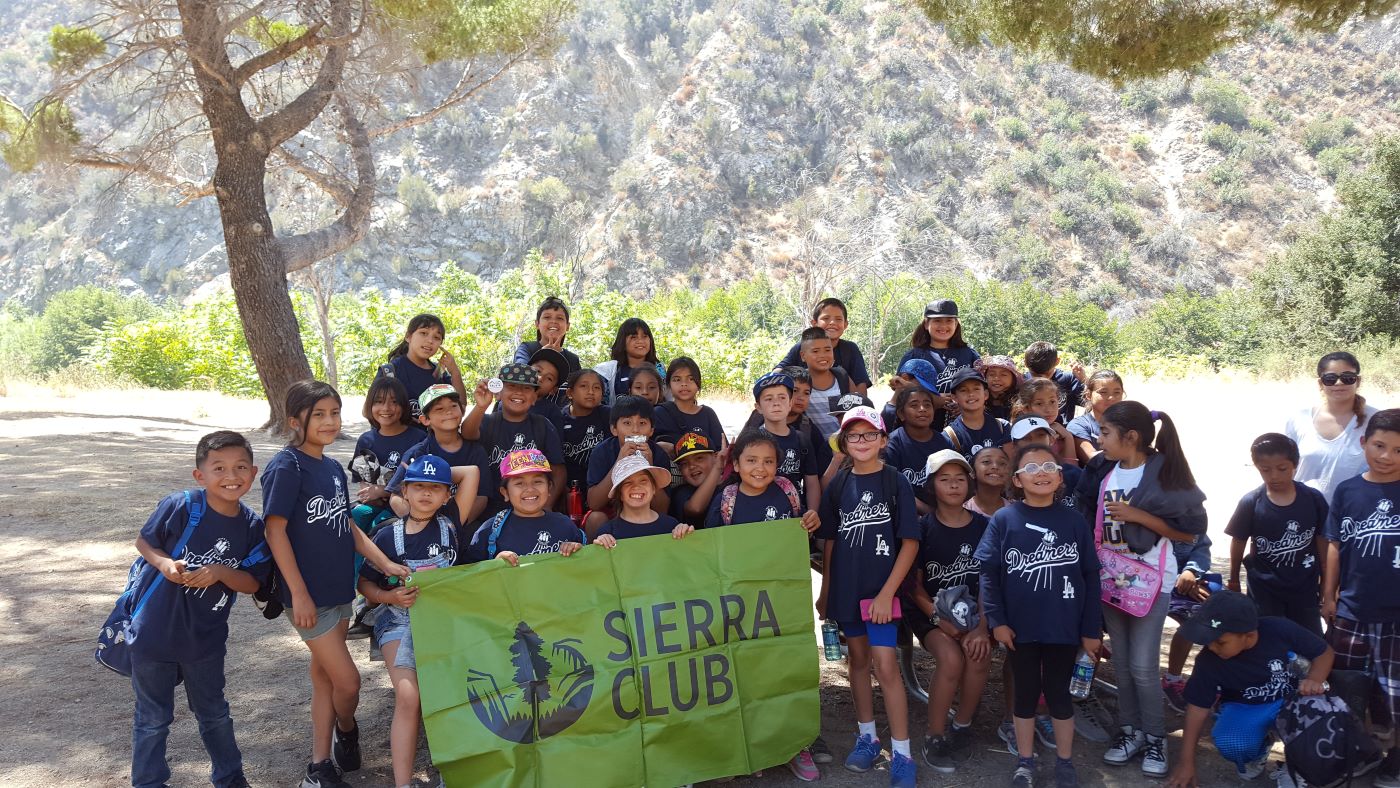If you travel roughly 50 miles north of Los Angeles’s center, you’ll end up a world away from the city. The often-snowcapped, always-breathtaking San Gabriel Mountains represent the very best of America’s public lands. Close to a major population center and beautifully preserved, this more than 700,000-acre space offers a real retreat from our fast-paced, hectic lifestyles. If you’re lucky enough while hiking some of the 550 miles of trails, you might catch a glimpse of a condor flying above or even a bighorn sheep grazing on one of the San Gabriel peaks. But to be honest, my favorite thing about the San Gabriels is the chance to see youth and families experience this vast wilderness for the first time. So many of us—at one time, myself included——are unaware that this place exists more or less in our backyards.
That reality is largely because too many people in Los Angeles do not have the transportation, outdoor gear, or societal privilege (rooted in our country’s history of segregation, redlining, and other racist policies that make the outdoors less accessible for people of color) to benefit from wild spaces like the San Gabriels that exist within a stone’s throw. At nearly every outing, I hear stories from our participants saying this is their first hike out in the mountains and their longest time spent out in a forest.
We already know there are immense physical, mental, and developmental benefits from having children spend time in nature regularly. Being outside and breathing in the fresh air can even boost our immune systems to fight viruses like COVID-19—an ongoing crisis devastating LA County. We should be pushing to protect nature, and for all of its benefits to be accessible to everyone—especially the young people who are our future.
My work with the Sierra Club and as chair of the Los Angeles-based Nature for All coalition focuses on breaking down the barriers youth face when it comes to getting outside. In a University of Southern California study, researchers found that young people in “low-income and concentrated poverty areas as well as neighborhoods with a majority of Latinos, African Americans, and Asian-Pacific Islanders, have dramatically lower levels of access to park resources than White-dominated areas of the city.” Since more than half of LA County’s young population is Latinx, that presents an alarming inequity—one we must address through thoughtful public policy.

An outing in 2019 aimed to raise awareness about Transit-to-Trail efforts to increase access to the outdoors. Photo from Roberto Morales.
Right now, we have the opportunity to pass public lands protections that not only prioritize conservation but also ensure communities have the necessary resources and access to get outdoors.
The must-pass National Defense Authorization Act now includes the Protecting America’s Wilderness Act—which would not only expand the San Gabriel Mountains National Monument by over 109,000 acres but also designate the space as a national recreation area. National recreation areas connect park-poor areas to open space and improve accessibility through improved resources, education, and public engagement—greatly increasing the chances for people to get outside more often. Thanks to our champions in California—Representatives Chu, Huffman, Carbajal, and Schiff—the legislation is paving the way for a healthier, sustainable future. There’s also great momentum in the US Senate thanks to Sen. Harris’s Protecting Unique and Beautiful Landscapes by Investing in California (PUBLIC) Lands Act, which is also moving these protections for the San Gabriels forward, along with similar efforts for public lands in Central and Northwest California.
Breaking down the barriers so more people can access the outdoors has positive ripple effects that benefit everyone—increasing revenue from recreation, ameliorating public health problems, and giving our youth the power to learn about nature and become environmental stewards.
This Latino Conservation Week, and in light of our country’s ongoing uprising to combat racism, I call on everyone to push for policies that prioritize inclusion in recreation. For too long, these spaces have served and benefitted the privileged, leaving underserved communities disconnected from the outdoors and further marginalized. We have a responsibility to our future generations— to preserve their health, their happiness, and their environment. It is time to make the benefits of the outdoors available for everyone. Take action: Join the Sierra Club and Nature for All coalition and urge elected officials to support these efforts so our young people can enjoy the transformative experiences of nature in and beyond their backyards.
Follow efforts to protect public lands across the state of California → Find @capubliclands on Instagram and Twitter
